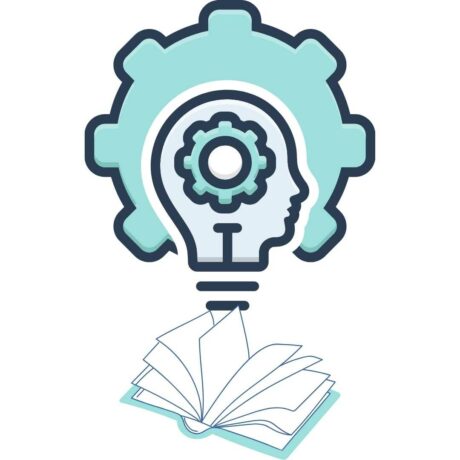
Reading is one of the most critical components of any language and an essential tool for lifelong learning. The goal of reading is comprehension.
What is reading comprehension?
Reading comprehension refers to a reader’s ability to interpret a text successfully. Mikulecky and Jeffries point out that reading comprehension means making sense of what readers read and connecting the ideas in the text to what they already know. Duffy defines reading comprehension as the essence of reading because if we do not understand the message, we are not reading.
What is the difference between literal and inferential comprehension?
Literal comprehension is a reader’s understanding of the events and information in a text. To test it, you can ask a child questions like “What happened?” or “Where did it happen?” Answers to these questions are all available in the text itself.
Inferential comprehension depends on literal understanding but goes further. The reader can form judgements that make sense (inferences) about the text, the author, or aspects of the text. For example, questions about the moral of a story or the writer’s intention rely on inferential comprehension. In order to deal with a text at this level, the literal level has to be automatic and effortless.
By age six to seven, children should be sensitive to such characteristics of stories as the main character, sequence of events, inferences, the motives and feelings of characters, and sentence order. As they age, children should be more efficient at recognising and recalling facts, recognising and inferring main themes and relationships, drawing conclusions, making judgements and generalizations, predicting outcomes, applying what they have learned, and following directions. Grades 4 to 6’s comprehension goals address these abilities and those required for independent study: skimming, using reference materials, outlining, summarising, altering reading rate and focus as the purpose of reading changes, using headings, note-taking, etc.
Reading comprehension and the reading disabled
For many reading-disabled learners, reading comprehension is a major problem. There are three causes:
- Poor decoding skills
Decoding is the act of connecting sounds with symbols. To decode a word,
(1.) you need to know which sound or sounds each letter makes, like how a g sounds in game and how it sounds in gym;
(2.) how to take apart the sounds in a word and blend them; for example, with man, the first sound is /m/, the next sound is /ă/, and the last sound is /n/; and
(3.) how groups of letters can work together to make a single sound, like ch in chip.
This skill needs to be in place for proficient reading to develop, but it’s not enough. There are words that you cannot decode. For example, words whose spelling is very different from their sound, such as “enough.” To successfully read English, you need to recognise this word like you would recognize someone’s face. Words that have a high frequency (occur often) or must be learned by sight are called sight words.
- Poor fluency
.
(1.) they make many mistakes;
(2.) they read slowly; or
(3.) they don’t read with appropriate expression and phrasing.
This makes intuitive sense. After all, it isn’t easy to understand someone who speaks haltingly or without natural intonation.
- Weak cognitive skills
There are many reasons why children struggle with decoding and fluency in the first place, the most common being weak cognitive skills. Cognitive psychology has now linked many brain-based skills to reading disabilities: phonological awareness; verbal fluency; attention and executive functions; visual attention; visuospatial abilities; processing speed; short-term memory; auditory working memory; visual memory and visual sequential memory; visual long-term memory, especially for details; verbal long-term memory; and rapid naming.
What is ‘Specific Reading Comprehension Deficit?’

When a child is a fluent reader yet still struggles with comprehension, there are four causes:
- Poor vocabulary
Being able to pronounce a word correctly does not guarantee that one understands its meaning. For example, being able to pronounce the word archipelago will not be very helpful when reading a passage about Lofoten, an archipelago in the county of Norland, Norway; it is vital that one also understands the word’s meaning, i.e., ‘an island group.’
.
Decades of research have confirmed vocabulary’s important role in reading comprehension and students’ overall academic success.
.
- Poor memory
Neuroimaging of children showed that, while reading, the brain function of those with reading comprehension problems is quite different and distinct from those with reading disabilities. Those with reading disabilities exhibited abnormalities in a specific region in the occipital-temporal cortex, a part of the brain associated with successfully recognizing words on a page. On the other hand, those with reading comprehension difficulties did not show abnormalities in this region. Instead, they showed specific abnormalities in areas typically associated with memory.
Short-term memory holds information in the mind for only a few seconds while it is being processed. Long-term memory is where such processed information is permanently stored. Working memory is an intermediary and active memory system in the information-processing area of the brain. It is a crucial memory system that most of us use daily.
Sentence comprehension depends heavily upon adequate working memory. For example, working memory is required to comprehend sentences that are complex in structure, such as, “The clown that is hugging the boy is kissing the girl.” It helps us interpret lengthy sentences, such as, “Do every other problem on page fifteen and all of the problems on page sixteen before checking your answers in the back of the book.” We use working memory when preserving word order (syntax) is essential to correctly understand a sentence like, “It was the boy’s ball and not the girl’s that was dirty.”
Sentences must be held in working memory and must also be integrated. Each sentence is read, understood, associated, and integrated with the previous one, and so forth. Eventually, the entire paragraph is read, and the reader continues to the next one. By the end of the chapter, the details and main idea must be retained in working memory; otherwise, the reader may have kept isolated facts but may not know the sequence of events or understand the main idea.
- Poor logical thinking skills
Logical thinking is the process in which one uses reasoning consistently to conclude. Problems or situations involving logical thinking call for structure, relationships between facts, and chains of reasoning that “make sense.”
.
The relationship between logical thinking and reading is well-established in the literature. It has been said that “there is no reading without reasoning,” and even that reading is reasoning.
.
- Text cannot be tied to foreknowledge
 To read with comprehension, a reader must be able to integrate what they are reading with foreknowledge. Foreknowledge can be defined as the range of one’s existing knowledge and past experiences. If one reads something that cannot directly be connected to or tied in with knowledge that one already possesses, one cannot decipher the message’s contents. As Harris et al. state in Learning Disabilities: Nature, Theory, and Treatment, “What a child gets from a book will often be determined by what the child brings to the book.”
To read with comprehension, a reader must be able to integrate what they are reading with foreknowledge. Foreknowledge can be defined as the range of one’s existing knowledge and past experiences. If one reads something that cannot directly be connected to or tied in with knowledge that one already possesses, one cannot decipher the message’s contents. As Harris et al. state in Learning Disabilities: Nature, Theory, and Treatment, “What a child gets from a book will often be determined by what the child brings to the book.”Lastly, imagination plays a role in comprehension. It is doubtful whether a person understands something unless they can think about it in terms of pictures. When we read, the words and thoughts comprising the message call up images in our mind’s eye. If this does not occur, the message might not make any sense. If you read or hear a sentence in an unfamiliar language, it will not make sense to you simply because none of the words will call up any pictures in your mind’s eye. Furthermore, by using one’s imagination while reading, one’s emotions can be addressed during the reading act.
Is poor reading comprehension holding your child back?
The good news is that weaknesses in cognitive skills can be attacked head-on; it is possible to strengthen these mental skills through training and practice. Edublox’s cognitive exercises aim at strengthening underlying cognitive skills, including processing speed, short-term memory, working memory, and logical thinking.
In addition, a child’s vocabulary will need to be improved, and they will also need application in the form of comprehension exercises. Edublox aims at improving vocabulary and teaching students to read with comprehension.
Contact your closest Edublox branch for more information.







Leave a Reply